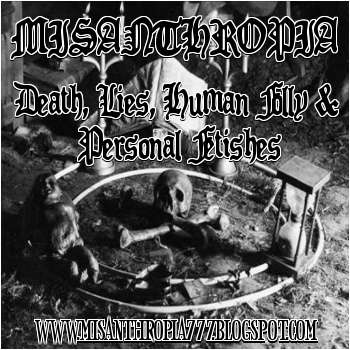 An Austrian house of bones filled with hundreds of intricately painted skulls
An Austrian house of bones filled with hundreds of intricately painted skullsThe town of Hallstatt is the kind of Austrian town that the sound of music might have been set in. On a beautiful forested mountain, set by a perfectly blue lake, filled with charming 19th century houses, it is a perfect vision of cheer. Except of course, for the room filled with skulls.
Behind the Hallstatt Catholic Church, near the St. Micheal's Chapel -- built in the 1100s and older then the church -- in a small and lovingly cared for cemetery is the Hallstatt Beinhaus or the Charnel House. A small building, it is tightly stacked with over 1200 skulls. Because Hallstatt finds itself in such a lovely location, on a mountain and beside a lake, it also finds itself in very short supply of burial grounds.
In the 1700s the church began digging up corpses to make way for the newly dead. The bodies which had been buried for only 10-15 years were then stacked inside the charnel house. Lest this all sound overly callous to the memory of the dead, there is a sweet element to the whole affair, a charmingness that Hallstatt can't seem to escape even with a room full of skulls.
Once the bones were exhumed and properly bleached in the sun, the family members would stack the bones next to their next of kin. In 1720 a tradition began of painting the skulls with symbolic decorations as well as dates of birth and death so that the dead would be remembered, even if they no longer had a grave. Of the 1200 skulls some 610 of them are lovingly painted, with an assortment of symbols, laurels for valor, roses for love, and so on. The ones from the 1700s are painted with thick dark garlands, while the newer ones, 1800s and on, bearing brighter floral styles.
Though this practice was officially stopped by the church in the 1960s, there is a much more recent skull in the beinhaus. Beside the cross with a gold tooth is the skull of a woman who died in 1983, her last request to be put in the beinhaus. The church made an exception to their rule and her skull was entered in 1995, the very last bone to go into the beinhaus.











 "He who can, does. He who cannot, teaches."
"He who can, does. He who cannot, teaches."



 "Being is substance and life; life manifests by movement; movement is perpetuated by equilibrium; equilibrium is therefore the law of immortality.
"Being is substance and life; life manifests by movement; movement is perpetuated by equilibrium; equilibrium is therefore the law of immortality.


 "The doctrine of equality!... But there exists no more poisonous poison: for it seems to be preached by justice itself, while it is the end of justice.... "Equality for equals, inequality for unequals" that would be the true voice of justice: and, what follows from it, "Never make equal what is unequal."
"The doctrine of equality!... But there exists no more poisonous poison: for it seems to be preached by justice itself, while it is the end of justice.... "Equality for equals, inequality for unequals" that would be the true voice of justice: and, what follows from it, "Never make equal what is unequal."



No comments:
Post a Comment
Note: Only a member of this blog may post a comment.